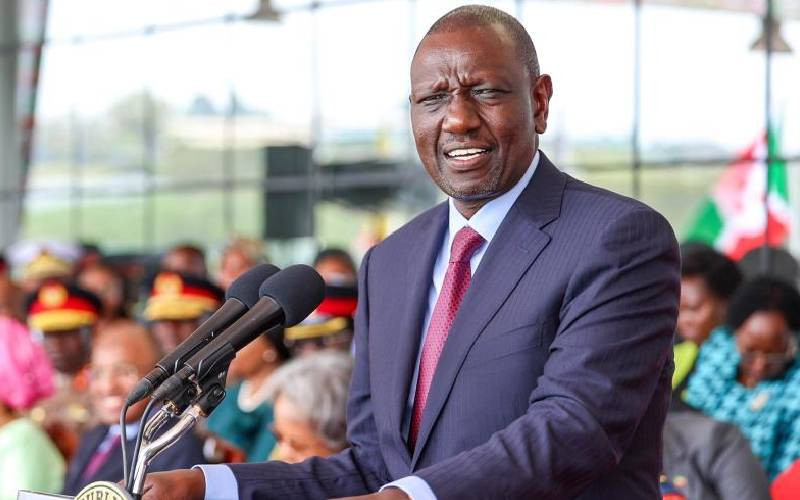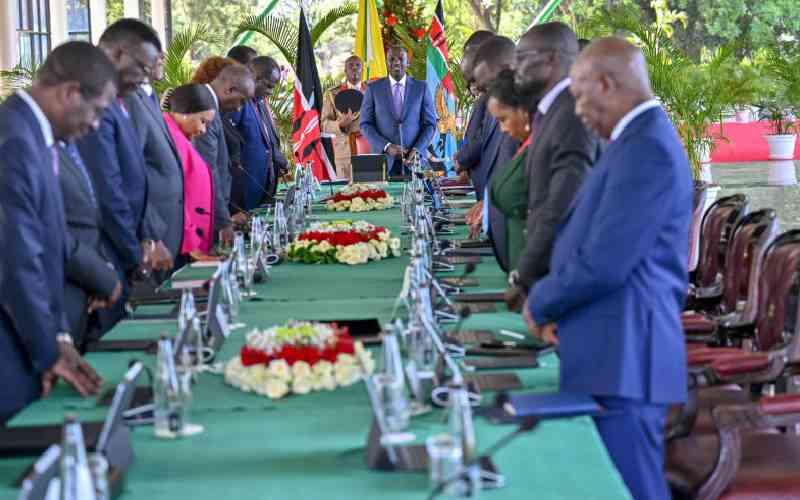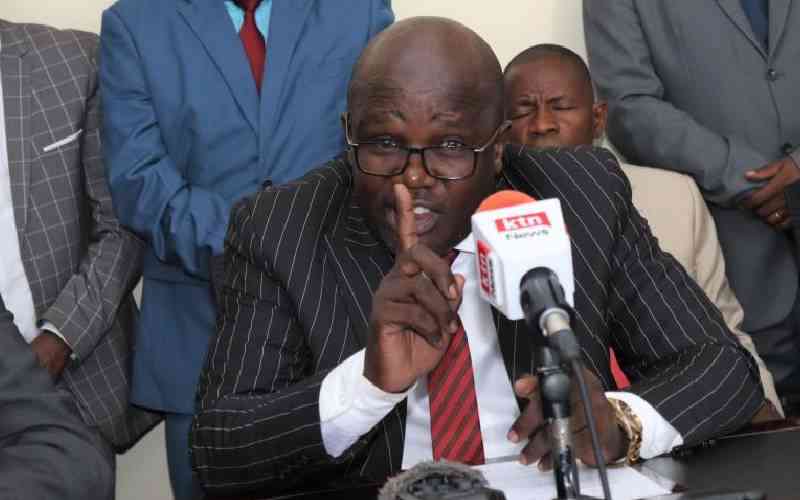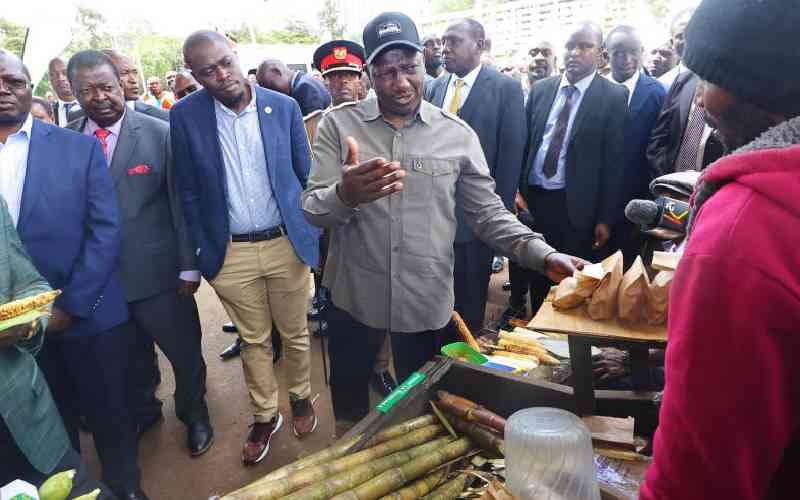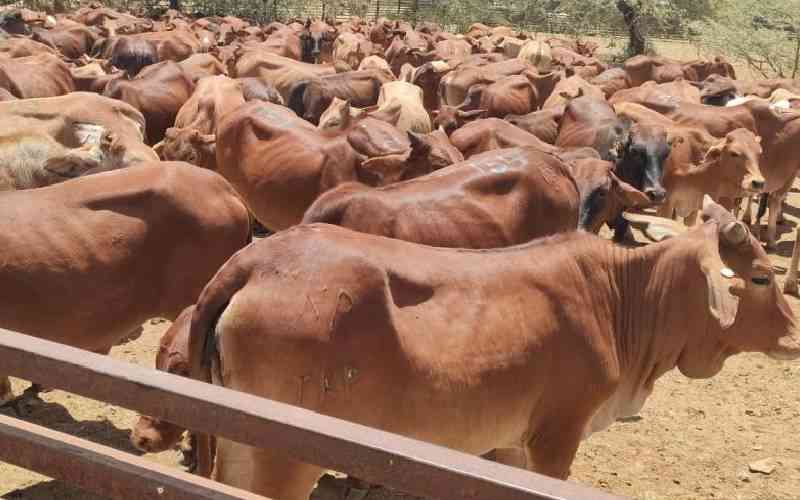
Kenya Kwanza's recently published the 2023 Budget Policy Statement (BPS) has elicited searching comments across our media, politicos and other stakeholders in the enterprise we call Kenya.
It is no surprise that the seemingly aggressive measures to accelerate tax and revenue collection captured mainstream media headlines, while social media offered a glimpse into KRA's plans with a current tender notice that includes "unmanned aircraft systems for aerial surveillance" (drones).
The BPS represents the latest reality check for a Kenya Kwanza leadership approach that persists with sweet promises left, right and centre on one hand, while seemingly "learning by doing" on the other. On the face of it, this lack of a distinctive method and style places them between "Jubilee 3.0" bearing endless gifts and "Old Kanu reloaded" dishing out daily lectures to all and sundry.
The real question for Kenyans is not if, but how, the "bottom-up" platform has translated into actionable policies, plans, programmes and projects that precede the budget and its implementation.
Where does Jubilee's post-Covid recovery strategy fit? What about Kenya Kwanza's economic recovery agenda in light of the fourth medium-term plan under our Vision 2030 blueprint?
And while "bottom-up" is mentioned nine times in the lengthy introductory chapter of the BPS, there is not enough in the macro-economic framing on say, savings, investment or their reciprocal current account (exports and imports) to clarify exactly how we will transform from a "top-down" Sh13 trillion economy in June 2022 to a far more inclusive Sh22 trillion one by June 2027.
It could be that preparation of sector plans that lead to the national plan is ongoing. But have these sector plans fed into sector budgets already presented to the public in recent hearings? Government work is not linear; it is a complex, and often over-complicated, matrix of interactions and iterations.
Work plan
- Ruto remains mute as healthcare crisis worsens
- Government calls on KMPDU to end strike
- Ruto going against KK manifesto, unions say
- Go back to work, Ruto tells striking doctors
Keep Reading
Including our four PFM rules. There is no budget without a plan. All budgets are programme-based. Projects do not exist outside programmes. There is no spending without a budget (supported by a work plan, procurement plan and cash flow forecast). This is the first PFM stress test, before we wander into the nitty gritty of budget execution, project implementation and service delivery.
Treat this as the opening preamble to four things you might usefully wish to ponder on this BPS.
The first one relates to the supplementary budget estimates for the current 2022/23 fiscal year. We don't yet have the detailed estimates, but the BPS gives us relevant fiscal data. Do you recall the early presidential directive to cut spending by Sh300 billion? Was it enforced and effected?
Not in this "supplementary 1" (first supplementary budget). Total spending will rise by Sh31 billion from Sh3.36 trillion to Sh3.39 trillion on account of conditional allocations to counties (Sh30 billion). Development spending is cut by Sh80 billion which is offset by a recurrent spending jump of Sh81 billion. The latter increase is mostly Sh24 billion in wage bill and Sh57 billion in operations and maintenance/transfers. The development cut is in foreign financing. In these early days, we have a "rubber meets the road" moment for Kenya Kwanza after the loud declarations. It painfully reminds us of Jubilee's many executive orders that were mostly ignored.
For the record, "supplementary 1" raises the ordinary revenue target by Sh50 billion, with taxes (mainly income tax and VAT) accounting for Sh11 billion of the increase, investment income up by four billion and the rest (Sh35 billion) being "other income". Based on Sh2.51 trillion revenue, deficit financing falls by Sh14 billion to Sh849 billion after also cutting grants by five billion.
The second observation builds on points this column has previously canvassed. We read in the BPS that the revenue ambition for 2023/24 is stated in words as three trillion shillings, with a medium-term dream of four trillion by 2026/27.
To be clear, the actual 2023/24 target is Sh2.9 trillion and Sh4.2 trillion in 2026/27. In context, last year's (2021/22), revenue was Sh2.2 trillion and "supplementary 1" for 2022/23 has pushed this to the Sh2.5 trillion mentioned earlier.
In the interest of space, here are four quick thoughts. One, those are revenue, not tax targets. The tax take is projected at Sh2.4 trillion in 2023/24 rising to Sh3.6 trillion in 2026/27 (against 2021/22 actuals of Sh1.8 trillion and "supplementary 1" of two trillion in 2022/23). More telling is that taxes as a proportion of revenue will rise from 79 per cent in 2020/21 and 80 per cent in 2021/22 to 81 per cent in the current year, 84 per cent in 2023/24 and 85 per cent by 2026/27.
Two, what is the role of the national tax policy and medium-term tax revenue strategy before setting targets? Shouldn't we agree tax objectives before KRA aggressively invades our privacy?
Relatedly, although cutting compliance gaps (income tax and VAT) is fine in theory, there might be questions around measures such as integration with telcos, mapping rental properties, targeting the Sh2.8 trillion informal sector tax base, gaining a 360-degree view on all of our economic transactions and monitoring factory production. Might a "Big Brother" lens push private activity deeper into our "grey" (informal) or "black" (illegal) economies without public trust beforehand?
Four, are these overall revenue targets meaningful when they represent different income sources - taxes, investments and sale/delivery of goods/services? In the case of taxes, this is interesting given that the tax mix doesn't change much between 2020/21 in the past and 2026/27 in the future (income taxes 49 per cent; import duty 7-8 per cent; excise 14-15 per cent; VAT 29-30 per cent). In the case of sale/delivery of goods/services (which will fall from 13 to 10 per cent of revenue by 2026/27), where are the impacts from our much-promised digitalization of government services?
The period 2023/24 is about more than revenue, so what's the storyline as a third overall observation? Well, the headline budget of Sh2.9 trillion in revenue to cover Sh3.6 trillion in spending is actually Sh2.4 trillion in taxes to cover Sh1.7 trillion in debt service and a Sh600 billion wage bill before we get to service delivery, development or county allocations. Or differently, the same Sh2.4 trillion in taxes will cover Sh2.4 trillion in recurrent spending, with about five billion in change.
Ignoring the new Sh473 billion that the Parliamentary Budget Office said that Kenya Kwanza needs to implement the first-year commitments in its "bottom-up" manifesto, if taxes equal recurrent national spending, it means government must still invest in stuff, sell stuff and continue to borrow to meet all development and county spending, and make debt repayments. The short story is that "privatisation" and "public-private partnerships" will become our new buzzwords.
To be fair as a fourth and final observation, the BPS models a medium-term perspective of Kenya Kwanza's fiscus. If we include the 2022/23 fiscal year they inherit, we are looking at five-year revenues of Sh16.7 trillion (including Sh14.7 trillion in ordinary revenue of which Sh13.9 trillion is taxes, and also adding Sh248 billion in grants). In nominal (money of the day) terms, Jubilee's nine-year (2013/14 to 2021/22) equivalent was Sh13.5 trillion (Sh6.3 trillion in the first five years).
On the spending side, the projected five-year total (including counties) is Sh20.5 trillion, against Jubilee's Sh20.1 trillion in nominal terms in nine years, of which nine trillion covered the first five. If we follow these basic numbers, Kenya Kwanza's five-year shortfall (borrowing need) is Sh3.8 trillion. Jubilee's first five years was short by Sh2.7 trillion, and Sh6.6 trillion after nine. This high-level data explains our end-June public debt levels that stood at Sh1.9 trillion in 2013, rose to Sh4.6 trillion in 2018 and Sh8.5 trillion in 2022, and will hit Sh12.3 trillion by 2027.
These are all nominal terms, so today's shilling is less valuable than yesterday's (you need more today to keep up with yesterday). Yet, very simply in the next five years, Kenya Kwanza says it wants to grow revenue by 91 per cent and the economy by 80 per cent while restricting spending growth to 52 per cent and the increase in debt to 44 per cent. Many have missed this subtle nuance.
For the record, Jubilee's nine-year equivalent was 154 per cent revenue growth as the economy grew by 181 per cent with spending up by 167 per cent and debt ballooning by 347 per cent! In its first five years, revenue was up by 76 per cent, the economy by 77 per cent, spending by 90 per cent and debt by 142 per cent; while the final four handshake myears (from a 2017/18 base) recorded increases of 44, 59, 41 and 85 per cent on revenue, economy, spending and public debt.
In sum, this first Kenya Kwanza BPS commits to grow revenue and the economy faster than Jubilee ever did, with more disciplined spending and debt management.
All we need now is the underpinning "bottom-up" economic plan because, to repeat, "there is no budget without a plan".
 The Standard Group Plc is a multi-media organization with investments in media platforms spanning newspaper print
operations, television, radio broadcasting, digital and online services. The Standard Group is recognized as a
leading multi-media house in Kenya with a key influence in matters of national and international interest.
The Standard Group Plc is a multi-media organization with investments in media platforms spanning newspaper print
operations, television, radio broadcasting, digital and online services. The Standard Group is recognized as a
leading multi-media house in Kenya with a key influence in matters of national and international interest.



